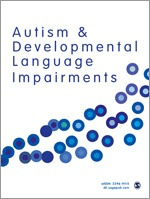
Autism & Developmental Language Impairments
Scope & Guideline
Connecting academia and practice for transformative outcomes.
Introduction
Aims and Scopes
- Focus on Autism Spectrum Disorder (ASD):
The journal emphasizes research related to autism spectrum disorder, including its characteristics, challenges, and interventions, particularly in educational settings. - Developmental Language Disorders:
A significant portion of the research focuses on developmental language disorders, exploring their relationship with autism, communication strategies, and intervention techniques. - Qualitative and Quantitative Methodologies:
The journal publishes studies utilizing both qualitative and quantitative methodologies to provide comprehensive insights into the experiences of individuals with autism and their families. - Intervention Strategies:
Research on various intervention strategies, including behavioral, educational, and therapeutic approaches, is a core area, aimed at improving outcomes for autistic individuals. - Family and Social Dynamics:
The journal addresses the social dynamics and family experiences of those affected by autism, focusing on relationships, peer interactions, and the impact of parental involvement. - Cross-Cultural Perspectives:
The journal includes studies that consider cultural influences on autism and language impairments, reflecting the global diversity of experiences.
Trending and Emerging
- Peer Interaction and Social Skills:
An increasing number of studies focus on the peer interactions and social skills of autistic individuals, emphasizing the importance of social integration and the experiences of children in inclusive settings. - Impact of COVID-19 on Autistic Populations:
Research exploring the effects of the COVID-19 pandemic on autistic individuals and their families is on the rise, highlighting the unique challenges faced during this period. - Parent and Family Perspectives:
There is a growing emphasis on understanding the experiences and needs of parents and families of autistic children, reflecting a trend towards family-centered research. - Technology and Augmentative Communication:
Emerging studies investigate the use of technology and augmentative communication methods for individuals with autism, showcasing innovative approaches to support communication development. - Cultural and Linguistic Diversity:
Research that addresses the experiences of autistic individuals from diverse cultural and linguistic backgrounds is increasingly prominent, indicating a broader understanding of autism across different contexts. - Gender Differences in Autism Research:
An emerging focus on gender differences in autism, particularly regarding language skills and social interactions, is becoming more prevalent, suggesting a need for tailored interventions.
Declining or Waning
- Traditional Behavioral Approaches:
There seems to be a decline in studies focusing exclusively on traditional behavioral approaches to autism intervention, as newer methodologies and frameworks gain traction. - Narrow Focus on Specific Language Skills:
Research that solely examines specific language skills in isolation is less frequent, possibly due to a growing recognition of the need for more holistic approaches that consider social and emotional contexts. - Generalized Studies on Autism:
There is a noticeable reduction in broad, generalized studies that do not delve deeply into specific aspects of autism or language impairments, suggesting a shift towards more targeted research.
Similar Journals
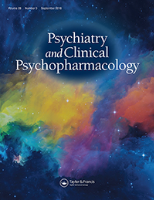
Psychiatry and Clinical Psychopharmacology
Unveiling Breakthroughs in Clinical PsychopharmacologyPsychiatry and Clinical Psychopharmacology, an open-access journal published by AVES since 2017, is dedicated to advancing the fields of psychiatric medicine and psychopharmacology. With an ISSN of 2475-0573 and an E-ISSN of 2475-0581, this journal aims to provide a platform for disseminating innovative research and clinical findings relevant to mental health professionals and researchers. Although it currently holds a Q3 ranking in Pharmacology (medical) and a Q4 ranking in Psychiatry and Mental Health according to the 2023 category quartiles, the journal has established itself as a significant contributor to evolving discussions in these critical fields. Based in the United Kingdom, the journal encompasses diverse topics, ranging from pharmacological treatments to novel therapeutic approaches in psychiatry, thereby appealing to a broad audience of clinicians, scientists, and students. The open-access model ensures that all research is readily available, fostering an environment of collaboration and knowledge-sharing as the journal converges until 2024 to encompass the latest advancements in both pharmacology and clinical psychopharmacology.
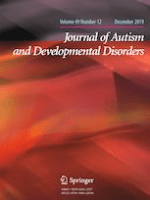
JOURNAL OF AUTISM AND DEVELOPMENTAL DISORDERS
Pioneering interdisciplinary dialogue in autism research.JOURNAL OF AUTISM AND DEVELOPMENTAL DISORDERS, published by Springer/Plenum Publishers, is a premier academic journal dedicated to advancing knowledge in the field of autism and related developmental disorders. With an impressive impact factor reflecting its reputation for rigorous peer-reviewed research, this journal has firmly established itself within the Q1 category of Developmental and Educational Psychology, ranked #32 out of 360 journals in its category, placing it in the top 91st percentile. The journal covers a broad range of topics, including intervention strategies, developmental trajectories, and the neurobiology behind autism spectrum disorders, making it an essential resource for researchers, educators, and clinicians alike. Since its inception in 1979, the journal has maintained a commitment to disseminating significant findings that can contribute to better understanding and support for individuals with developmental disorders, promoting interdisciplinary dialogue and collaboration. While it is not offered as open access, the Journal of Autism and Developmental Disorders remains a vital platform for the dissemination of transformative research in this crucial area.
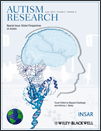
Autism Research
Pioneering insights into the complexities of autism spectrum disorders.Autism Research, published by WILEY, is a premier academic journal dedicated to advancing the understanding of autism spectrum disorders (ASD) through high-quality research and clinical studies. With the ISSN 1939-3792 and E-ISSN 1939-3806, this journal has been integral to the field since its inception in 2008 and has been consistently ranked in the Q1 quartile across categories such as Genetics (clinical), Neurology (clinical), and various facets of Neuroscience. Holding prominent Scopus ranks, including #18 in Genetics (clinical) and #26 in General Neuroscience, Autism Research provides a vital platform for researchers, clinicians, and students alike to disseminate innovative findings and foster collaborations aimed at improving diagnosis and treatment strategies for individuals with autism. While not an open access journal, it offers a blend of insightful articles and impactful research that is essential for professionals seeking to stay at the forefront of this rapidly evolving field.

Journal of the Korean Academy of Child and Adolescent Psychiatry
Pioneering research for the well-being of future generations.The Journal of the Korean Academy of Child and Adolescent Psychiatry (ISSN: 1225-729X; E-ISSN: 2233-9183) stands as a pivotal resource in the fields of child and adolescent mental health, contributing significantly to the dialogue on psychiatric practices and research in South Korea and beyond. Published by the KOREAN ACADEMY OF CHILD & ADOLESCENT PSYCHIATRY, this journal is recognized for its dedication to advancing the understanding of psychiatric disorders that affect children and adolescents, as evidenced by its Q3 ranking in both Pediatrics, Perinatology and Child Health and Psychiatry and Mental Health categories for 2023. Operated from Seoul, South Korea, the journal facilitates knowledge-sharing among researchers and practitioners, providing insights into clinical practices and innovative treatment methodologies. Although not openly accessible, the journal emphasizes quality over quantity in its selection of studies, making each article a valuable contribution to the field. As the journal continues to publish impactful research through 2024, it remains essential reading for those committed to the well-being of younger populations and their families.

Communication Sciences and Disorders-CSD
Empowering professionals through rigorous academic research.Communication Sciences and Disorders-CSD, published by the Korean Academy of Speech-Language Pathology & Audiology, is a pivotal academic journal dedicated to the fields of communication sciences, speech-language pathology, and audiology. With an ISSN of 2288-1328 and an E-ISSN of 2288-0917, this journal has been contributing to the body of knowledge since 2013 and is set to continue its impactful journey through 2024. The journal is recognized for its rigorous research and maintains respectable rankings within various categories, achieving a Q2 in Linguistics and Language and Q3 in Communication, Speech, and Hearing for 2023. It offers valuable insights for researchers and professionals committed to advancing understanding and treatment in communication disorders. Though currently not open access, the journal provides robust academic resources that are essential for those striving to innovate and enhance practices in speech and hearing disciplines in South Korea and beyond.
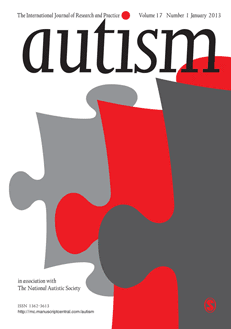
AUTISM
Advancing understanding of autism spectrum disorders.AUTISM, published by SAGE Publications Ltd, is a leading journal in the field of Developmental and Educational Psychology, recognized for its significant contributions to understanding autism spectrum disorders. With an impressive impact factor, AUTISM ranks in the top 94th percentile among developmental and educational psychology journals, placing it in the prestigious Q1 quartile as of 2023. Since its inception in 1997, this UK-based journal has served as a vital resource for researchers, practitioners, and students, providing a platform for high-quality empirical research, reviews, and theoretical discussions that address contemporary challenges and advancements in autism research and practice. Readers can expect to find innovative studies that influence policy, education, and treatment methodologies, making AUTISM indispensable for those dedicated to enhancing the lives of individuals on the spectrum.
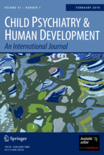
CHILD PSYCHIATRY & HUMAN DEVELOPMENT
Connecting Knowledge with Human Development InsightsCHILD PSYCHIATRY & HUMAN DEVELOPMENT, published by Springer, stands at the forefront of research in the fields of developmental and educational psychology, pediatrics, perinatology, and child psychiatry. With an ISSN of 0009-398X and an E-ISSN of 1573-3327, this esteemed journal has been a vital resource for academics since its inception in 1970. Currently ranked in the Q1 category across its multiple relevant disciplines, it illustrates a significant impact with its Scopus rankings, placing it within the top 13% for pediatrics and child health and the top 18% for developmental psychology. Its comprehensive scope ensures that leading-edge studies, reviews, and discourse are accessible, contributing greatly to the understanding of mental health and developmental processes in children. With no open access option, the journal maintains a commitment to high-quality, peer-reviewed content that is invaluable for researchers, healthcare professionals, and students alike, as they strive to advance their knowledge and practices in child psychology and human development.
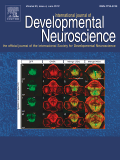
INTERNATIONAL JOURNAL OF DEVELOPMENTAL NEUROSCIENCE
Connecting Scholars Through Innovative Neuroscience ResearchThe INTERNATIONAL JOURNAL OF DEVELOPMENTAL NEUROSCIENCE is a critical platform for disseminating cutting-edge research in the field of developmental biology and neuroscience. Published by WILEY, this esteemed journal has been contributing to the academic community since its inception in 1983, and continues to serve as a vital resource through to 2024. With an impact factor that reflects its influence in the field—ranking in Q3 for both Developmental Biology and Developmental Neuroscience—this journal presents an opportunity for researchers, professionals, and students alike to engage with pioneering studies and extend their understanding of complex developmental processes. Although not open access, the journal provides an essential repository of knowledge for those seeking to explore the nuances of neurological development and related disciplines. It actively supports academic discourse and research dissemination, thereby playing a significant role in advancing our collective understanding of developmental neuroscience.
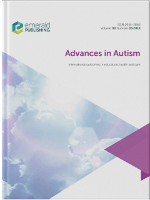
Advances in Autism
Unveiling New Perspectives in Autism Spectrum DisordersAdvances in Autism is a prominent academic journal published by Emerald Group Publishing Ltd, dedicated to the comprehensive exploration of autism spectrum disorders through the lenses of Cognitive Neuroscience, Developmental Psychology, and Psychiatry and Mental Health. Since its inception in 2015, the journal has made significant strides in disseminating high-quality research and fostering interdisciplinary collaboration within its diverse scope. With a respectable 2023 impact factor placing it in the Q3 category across multiple relevant fields, including Neurology and Clinical Psychiatry, Advances in Autism serves as an essential resource for researchers, practitioners, and students alike, aiming to advance the understanding of autism and its related challenges. Although currently not open access, the journal provides various subscription options to facilitate widespread access to its cutting-edge insights and empirical studies, making it an indispensable tool for anyone invested in autism research.
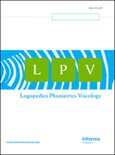
Logopedics Phoniatrics Vocology
Empowering Research in Speech and Language TherapyLogopedics Phoniatrics Vocology, the distinguished journal published by TAYLOR & FRANCIS LTD, serves as a pivotal platform for the dissemination of research and clinical advancements in the intricate fields of speech, language, and communication sciences. With an ISSN of 1401-5439 and an E-ISSN of 1651-2022, this journal has gained recognition since its inception in 1991, reflecting its commitment to fostering scholarly dialogue until 2024. Ranked in the Q2 and Q3 quartiles across diverse categories such as Arts and Humanities, Medicine, and Speech and Hearing, it showcases a reputable standing, particularly with a 73rd percentile rank in Arts and Humanities. Although currently not an open-access publication, it offers vital insights and empirical research that are crucial for researchers, clinicians, and students in the field, positioning itself as an essential resource for those dedicated to improving communication health. Based in the United Kingdom, at 2-4 PARK SQUARE, MILTON PARK, ABINGDON OR14 4RN, OXON, ENGLAND, the journal invites contributions that explore interdisciplinary approaches and innovative practices in logopedics and related realms.